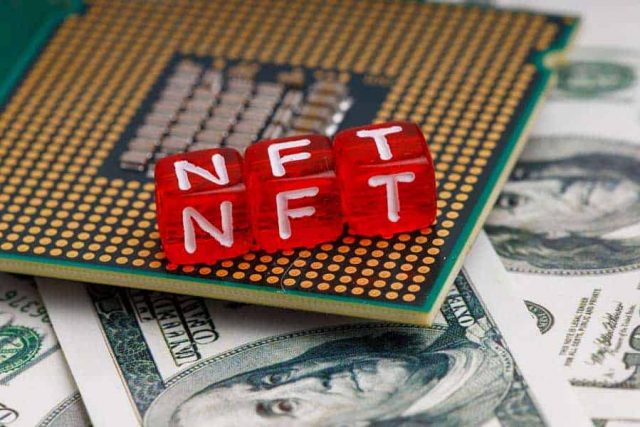The digital world is fast-moving and constantly evolving, so much so that it can be hard to keep up sometimes. You may have heard of this new fangled thing called an NFT, but perhaps don’t have any idea what it is, how it works, or how it can be used. You’re not alone in your confusion. While the idea of an NFT is relatively simple, its rapid-pace adoption into popular culture has left a lot of people wondering what it is. The following will explain what NFTs are, how they work, and how you can make use of them.
Important Terms:
The term fungible means that an identical item is equal to or can fairly replace another item. If you take one quarter and your friend takes another quarter, and the two of you trade quarters, no one has gained or lost anything; you both have 25 cents. This is because quarters (provided they’re not from a rare minting year) are fungible.
A blockchain is a digital, decentralized public ledger. The ledger keeps a permanent record of transactions on a specific network and allows this record to be visible to the public. Systems involving blockchains are often deemed trustworthy as they are designed to be secure; each block that is added (this happens every time a new transaction is recorded), the new block contains information about the blocks previously added and so reinforces the previous data. This makes them highly resistant to modification, which, given the prevalence of cybercrime and online hacking, is impressive.
Moreover, the decentralized aspect of blockchain technology means that the information isn’t held in one location; it’s spread across a network that has many locations. Since each location has a copy of all the information, it’s much harder to mess with. No single user or password is considered more trustworthy than others by the system, making the data as close to incorruptible as possible.
What Is An NFT?
In the most basic sense, an NFT is a digital item that can be owned by someone.
NFT stands for non-fungible tokens. They are digital assets. Hidden within their metadata are unique qualities that make it impossible to replace or alter them; quite simply, they are one of a kind. Once an NFT has been created, it is permanently recorded on the blockchain’s public ledger, meaning everyone can see it. It’s non-fungible, meaning you can’t simply trade one for another; if you own the NFT, you’re the only person in the world who owns it, and you will be able to prove it.
Most commonly, NFTs come in the forms of works of art, music, videos, and in-game items. Of course, as the world of NFTs expands and as more people become aware of them and their benefits, it is likely additional uses will be discovered and implemented. NFTs have been around since 2014; this being said, they have recently grown in popularity as an incredibly effective way to sell and buy digital artwork. Incredible sale prices are being reported in the news as well, which is bringing more artists and more art collectors into the world of NFTs, further increasing popularity.
Purchasing Or Creating NFTs
If you’re someone that is interested in purchasing NFTs or you want to turn some of your personal work into an NFT, there are a few steps you’ll have to take. NFT aficionados at Jungle explain that you’ll need to set up a digital wallet that can make and receive payments for NFTs. These are relatively simple things to set up; think of them as accounts and keep your account information private.
In many cases, NFTs are sold for cryptocurrencies instead of currencies that you might be more familiar with. Depending on what you want to buy or what currencies your target audience prefers, you may need to exchange some of your money for a cryptocurrency. It is into this wallet that the digital files and proof of purchase data will be delivered or received. It is also with this wallet that you will pay or be paid for any NFTs you buy or sell.
If you’re looking to sell, know that you have many options available to you. Auctions are common, as are listings with a set price.
A Solution To Digital Abundance
One of the biggest issues for creators of digital art is monetizing all their hard creative work. This is because a digital image can be captured with a screenshot, saved, shared, or recorded without the need to offer up any money. NFTs are an excellent solution to this as there is an original copy of the artwork that can be bought and owned by someone. Having the original image or work that is traceable creates scarcity in the digital sphere, which allows artists to earn real money for their efforts.
Balancing The Share Of Art
Another major draw of the NFT concept is how fair it is to people of all financial standings. The original art—the NFT—can be bought and sold, paid for by an art collector. The image itself can still be shared online, however, meaning those who can’t afford to buy original artworks get to see the image. Unlike the traditional art marketplace where someone buys a painting and keeps it in their living room where only they and their guests can view it, everyone who has internet access can experience the artwork, but only one person can own it. This balance respects everyone’s financial standing and gives everyone access to great works of art.
The above information should have explained what an NFT is and how it can be utilized. Of course, this concept is still extremely new, so there’s lots of space for new developments in the industry. Just because the digital item you produce isn’t widely sold in NFT form at the moment doesn’t mean it won’t be in the future. It is also important to note that at this stage, it’s too soon to tell whether or not NFTs make for sound financial investments. It is possible that government legislation surrounding taxes and other factors could alter how wealth stored in NFTs practically functions; tastes and trends also drastically change rapidly in the digital world, meaning it’s hard to anticipate whether the value of a particular NFT will go up or down in the future.














